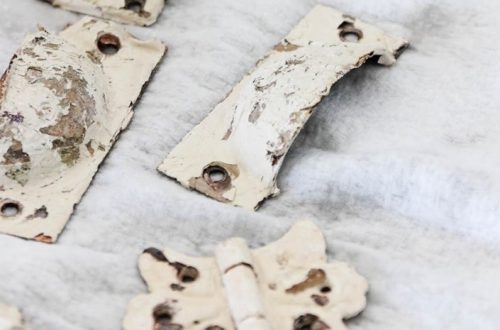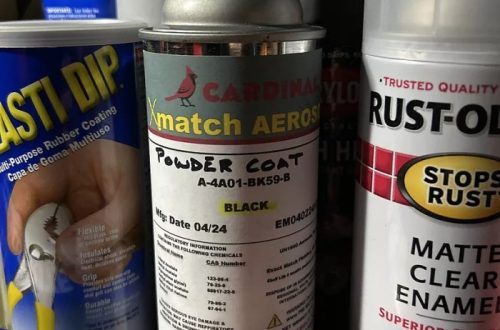Initial Flask Cleaning Steps
Maintaining the cleanliness of your flask is essential for taste and hygiene. Here are some simple yet effective initial steps to ensure your flask remains in pristine condition between uses.
- Empty Immediately: Don’t let residues sit. After every use, ensure you empty the flask completely.
- Rinse with Warm Water: A swift rinse with warm water can help to reduce buildup from drinks.
- Check Manufacturer’s Advice: Before proceeding with the cleaning, it’s always wise to refer to the manufacturer’s care guidelines.
- Use Gentle Detergents: Opt for a mild washing-up liquid to protect your flask’s interior and exterior.
- Avoid Soaking: Long soaks in water could damage your flask, so refrain from leaving it submerged.
- Employ Soft Tools: Utilize a soft-bristled bottle brush or sponge for cleaning to prevent scratches.
- Hot Water Rinse: Finish by thoroughly rinsing with hot water to remove any detergent traces.
By following these basic steps, you’ll set a solid foundation for keeping your flask clean and ready for your next adventure.

Dealing with Tea and Coffee Stains
Tea and coffee can leave stubborn stains in your flask. Here are some steps to tackle those tough spots effectively.
- Use Baking Soda: Sprinkle some baking soda inside your flask before adding boiling water. Let it sit for an hour or overnight for severe stains.
- Brush Gently: After the baking soda soak, use a soft bottle brush to scrub away lingering stains.
- Try Vinegar: If baking soda alone doesn’t suffice, add white vinegar to the mix. The combination can boost stain removal.
- Rinse Well: After cleaning, make sure you rinse the flask multiple times with hot water. This ensures no cleaning agent taste remains.
- Repeat If Needed: For persistent stains, you might need to repeat these steps.
Cleaning your flask soon after use can prevent stains from setting in. Quick action is often the key to a spotless flask.
Tips for Cleaning Flask Stoppers
Ensuring flask stoppers are clean is crucial for hygiene and preventing odor build-up. Here’s a straightforward guide to cleaning your flask’s stopper efficiently.
- Dismantle the Stopper: Carefully take apart your stopper if possible, to access all parts.
- Manual Washing: Use warm soapy water and a soft brush to clean every crevice.
- Dishwasher Option: Check if the stopper is dishwasher-safe and place on the top rack.
- Soak in Baking Soda: For deep cleaning, soak in a baking soda solution, then scrub gently.
- Air Dry Thoroughly: Allow the stopper to air dry completely before reassembling and storing.
Regular cleaning after each use will keep your flask stopper fresh and extend its lifespan.

Proper Drying Techniques for Flasks
Proper drying is as crucial as the cleaning process itself to maintain your flask’s integrity. Here are some methods to ensure your flask dries correctly:
- Air Drying: First, leave your flask, with its stopper off, in an upright position to air dry. This allows moisture to evaporate naturally. A well-ventilated area speeds up drying.
- Use a Clean Towel: If time is short, gently pat the inside with a clean, dry towel to absorb water. Avoid using towels that may leave lint or residue.
- Avoid Heat Sources: Keep flasks away from direct heat, like heaters or sunlight. Excessive heat can damage the seals and insulation.
- Store Separately: When fully dry, store the flask with its stopper and cup separate. This prevents moisture from getting trapped and mold from forming.
Remember, thoroughly drying your flask after cleaning is essential to prevent bacteria growth and unpleasant smells. It also ensures that your flask remains safe for storing drinks for your next outing.
Alternative Cleaning Solutions Involving Baking Soda
In the quest for a spotless flask, baking soda emerges as a close ally. This pantry staple is a gentle yet potent cleaner for even the most stubborn stains and odors in your flasks. Here’s how to use baking soda to your advantage:
- Preparation: Start by rinsing your flask with hot water to remove any loose residue.
- Create a Paste: Mix baking soda with a small amount of water to form a thick paste.
- Apply Inside Flask: Smear the paste all over the inner surface of the flask, focusing on stained areas.
- Let Sit: Allow the baking soda paste to work its magic for 15 to 30 minutes.
- Scrub Gently: Use a soft brush to scrub the interior without scratching the surface.
- Rinse Thoroughly: Wash out the flask with warm water, ensuring all baking soda is removed.
- Dry Completely: After a final rinse, leave the flask open to air dry.

For deep cleaning, you may opt for a more intense approach with baking soda:
- Boiling Water Technique: Fill the flask with boiling water.
- Add Baking Soda: Put in one or two tablespoons of baking soda.
- Close and Shake: Seal the flask and give it a good shake to distribute the solution.
- Leave to Soak: Set the flask aside for several hours or overnight for deep cleaning action.
- Final Steps: The next day, empty the flask and perform a final rinse with hot water before drying.
Regular use of baking soda in your cleaning regimen will help ensure your flask remains in excellent condition, safeguarding the flavor of your beverages and extending the lifespan of your flask.
Vinegar: A Natural Approach to Stain Removal
When other methods fail, vinegar can be your hero for removing flask stains and odors. Use white vinegar for a natural, effective clean. Remember to rinse your flask well after using vinegar to avoid leaving any aftertaste. Here’s how to use this kitchen staple:
- Pour in the Vinegar: Start by adding half a cup of white vinegar into your flask.
- Shake It Up: Seal your flask and give it a good shake. Pretend you’re mixing a drink.
- Let It Sit: Allow the vinegar to work its magic, leaving it for about 20 minutes.
- Empty Flask: After the time’s up, pour the vinegar out of the flask.
- Rinse to Perfection: Rinse your flask several times with hot water to eliminate vinegar traces.
By embracing the power of vinegar, you’re using a safe, natural substance that effectively tackles even the toughest of stains and smells in your flask.
The Practicality of Rice in Flask Cleaning
Cleaning with rice is a clever hack for reaching the hard-to-clean spots inside your flask. Uncooked rice acts as an abrasive, scrubbing away residue without scratching your flask’s interior. Here’s a step-by-step guide to use this pantry staple effectively:
- Pour Water: Start by filling your flask halfway with water.
- Add Rice: Toss in a few tablespoons of uncooked rice.
- Shake Vigorously: Firmly close the flask and shake it. The rice grains will scrub the inside.
- Discard Responsibly: Pour out the mixture into a sieve to prevent clogs in your sink.
- Rinse Thoroughly: Make sure to rinse out any remaining rice and water residue.
This method is particularly useful for flasks with narrow necks where brushes can’t reach. Regular use of the rice cleaning technique can maintain the cleanliness of your flask without the need for harsh chemicals or detergents.

Dishwasher-Safe Flasks and Proper Care
Taking care of dishwasher-safe flasks isn’t hard, but it does require attention to detail to sustain their longevity and performance. Consider the following steps when using a dishwasher to clean your flask:
- Consult Manufacturer’s Guidelines: Checking the product instructions is crucial. Not all flasks are dishwasher-friendly.
- Top Rack Placement: If dishwasher-safe, place your flask on the top rack. This protects it from intense heat.
- Separate Components: Disassemble the flask, removing lids and stoppers. Wash these parts separately.
- Choose Gentle Cycle: Avoid using high-temperature settings. A milder dishwasher cycle prevents damage.
- Dry Thoroughly: Post-wash, remove the flask from the dishwasher and allow it to air dry completely.
Following these steps helps to keep your dishwasher-safe flasks in peak condition, ensuring their ability to maintain the temperature of your drinks for future outdoor adventures or daily use.
Caring for Glass Thermos Flasks
Caring for glass Thermos flasks is different from their stainless steel counterparts. Here’s how to keep your glass flasks sparkling clean and safe for everyday use:
- Check Manufacturer’s Advice: Before cleaning, always consult the manufacturer’s instructions for specific care tips.
- Gentle Cleaning Agents: Use a mild detergent to avoid damaging the glass. Abrasive cleaners can cause scratches.
- Avoid Boiling Water: Never use boiling water to clean your glass flask as it could shatter.
- Soft Washing Tools: Apply a soft cloth or sponge to clean the flask. Hard brushes may crack the glass.
- Rinse with Care: Rinse your flask under warm (not hot) water to ensure all soap is gone.
- Air Dry: Allow your flask to air dry completely or use a soft towel to gently dry it.
By applying these simple steps, you ensure that your glass Thermos flask remains a safe, clean option for your favorite beverages. Clean glass flasks will offer many enjoyable drinks without the worry of unwanted flavors or risky cracks.

Addressing Limescale Buildup in Flasks
Dealing with limescale can be challenging. But with the right approach, you can keep your flask free from these tough deposits. Limescale often occurs in regions with hard water and can affect the taste and appearance of your drinks.
- Identify Limescale: Look for white, chalky residue inside your flask.
- Create a Vinegar Solution: Fill your flask with equal parts of white vinegar and water.
- Let It Soak: Close the flask and let the solution work overnight.
- Brush Away Residue: In the morning, use a soft brush to scrub off loosened limescale.
- Rinse Well: After scrubbing, rinse the flask several times to remove vinegar smell.
- Repeat as Needed: For serious buildup, you may need to repeat this process.
Remember, frequent cleaning can prevent limescale from accumulating. So try to clean your flask after each use. For those hard-to-reach areas, a bottle brush can be particularly effective. And always air dry thoroughly to avoid moisture that could lead to more buildup.




